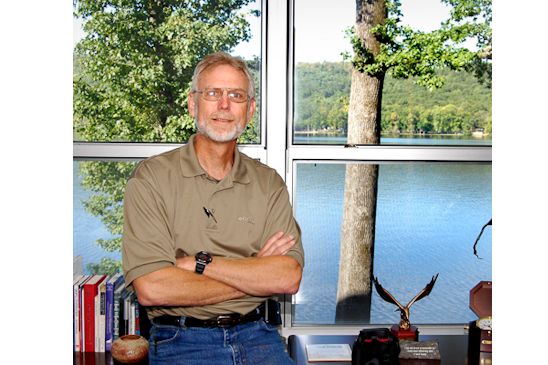Insights > Hydro Operations is a Balancing Act
Hydro Operations is a Balancing Act
07/17/2015

Entergy Arkansas' Bobby Pharr has, arguably, the best office in the whole company. As manager of the lakes, Pharr's work space overlooks picturesque Lake Catherine, the body of water that was formed about 70 years ago when company founder Harvey Couch built Remmel Dam on the Ouachita River near Hot Springs. At the time, the electricity generated at Remmel Dam was the biggest power source the company had going. Today, it's still cranking out clean electricity, but it supplies only a small fraction of what is consumed these days by Entergy customers.

Here's a look behind the scenes at what it means to manage the lakes. There's more to it than one might think.
Managing the lakes is a constant balancing act with multiple variables. It's all about the water. When weather forecasters predict heavy rains, we must estimate how much will fall in our watershed and prepare accordingly by lowering levels to mitigate flash flooding. When a dam upstream releases water, usually we'll adjust a dam downstream match it to maintain the level -- or not and raise the level. All the lakes have overall target levels and daily fluctuation ranges.
Then there's the reason the dams were built in the first place: lakes Hamilton and Catherine were created for hydroelectric power generation.
There are three dams on the Ouachita River for which Entergy manages the generation: Blakely, Carpenter and Remmel. Entergy owns Carpenter and Remmel, and we have a contract for the power generation from the U.S. Army Corps of Engineers' Blakely Dam. Our balancing act involves interactions between these three dams and the three lakes they create, as well as the river that runs through it all.
We generate hydroelectric power to obtain the lowest-price electricity available for Entergy customers. To be able to do this, the lake levels have to fluctuate more during those peak electrical demand periods like we are now experiencing. Generation is timed to match peak demand, which is typically during the hottest part of the day. These past several days (mid-July), the weather has been very hot, and demand for electricity has been very high. As a result, the system has called upon the dams for maximum generation in the afternoons.
Target levels are dictated by a license issued to Entergy Arkansas by the Federal Energy Regulatory Commission to operates the lakes and the dams. The license specifies that Lake Hamilton should fluctuate by no more than one foot daily. Lake Catherine's range is two feet daily. We try not to change the level of either of the lakes that much, but when demand for power is especially high, we tend to generate more. In the last few days, the level of Lake Hamilton has dropped a few inches below its normal summertime target level but well within its operating range. Lake Catherine, as well, has stayed within its normal operating range.
We are constantly working to balance the interests of those enjoying living and playing on the lakes with the need to generate power, all while doing what we can to keep levels manageable.
